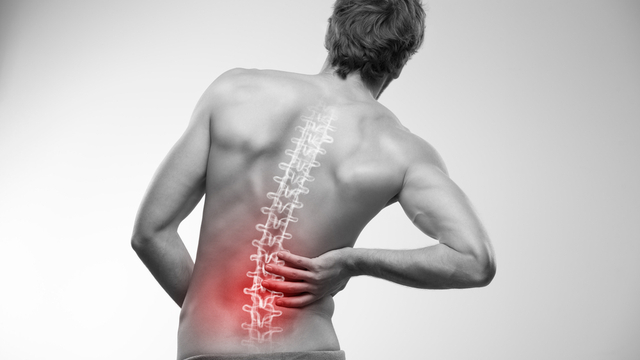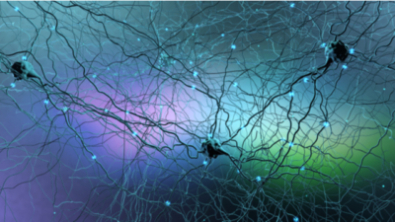Knee Joint Gel Injections: Get Relief from Arthritis Knee Pain for Months or More!
Missing out on life because of painful knees is frustrating.
Getting months of pain relief after a few out-patient injections can be reinvigorating.
How cushioning in knee joints breaks down.
Normal, healthy knees contain a gel-like substance called hyaluronan.
Hyaluronan acts as a lubricant for cartilage, the tissue covering the ends of bones, providing joint cushioning or shock absorption.
But in joints affected by osteoarthritis, rheumatoid arthritis, and gout (a complex form of inflammatory arthritis), the chemicals that make up hyaluronic acid break down, and levels of hyaluronic acid decrease.
With less and less lubricant, the cartilage wears out, and knee bones rub together, causing stiffness, inflammation, and pain.
Knee Joint Gel Injections
Your pain physician can replace that gel-like substance in your knee joint.
It’s that simple.
The Procedure
Depending on the state of your knee joint, your doctor or pain specialist will either administer a single injection once or one injection weekly for three to five weeks.
During the procedure, if the joint space in your knee is swollen with excess fluid, the doctor will first inject a local anesthetic to numb the area, then inject another needle for draining the fluid.
She may use ultrasound or X-Ray to guide a needle into the joint and then inject the hyaluronic acid.
How Quickly Does Relief Come?
You may feel pain relief immediately or require several or more injections.
And unlike steroid injections, the procedure can be repeated as many times as needed.
You can return to regular activity within 24 hours of the injection.
Most patients experience decreased pain and stiffness and improved range of motion soon after the injection.
How long does it last?
Though individual responses vary, people can experience relief for months or even a year or more.
In addition to pain relief, these injections can slow the progress of osteoarthritis, which causes the breakdown of cartilage.
Who Is A Good Candidate?
Pain specialists typically recommend hyaluronic acid injection after experiencing little or no relief from conventional treatments, such as:
- physical therapy
- non-steroidal anti-inflammatory medication
- corticosteroid injections
- ice or cold therapy
Also, some people cannot take more corticosteroids due to the health risks associated with repeated use or can’t tolerate NSAIDs due to disease and drug interactions.
Knee Pain Relief at Texas Pain Physicians (TPP)
To learn more about how a pain management doctor can help you overcome your knee pain issues, visit the pain specialists at TPP.
We help people like you every day.
Get the discussion started by calling (972) 636-5727 or schedule an appointment online.
7 Treatment Options for A Pinched Nerve in Your Lower Back
In your lower back, a pinched nerve, also known as a compressed nerve, can cause intense pain and discomfort.
You may experience the following symptoms in your lower back, hips, buttocks, legs, ankles, and feet:
- stabbing and shooting pain
- numbness
- muscle weakness
- muscle spasms
- loss of reflex
General practitioners and pain specialists typically recommend these four simple, non-invasive treatments before anything else:
1. Medicine
- non-steroidal anti-inflammatory drugs (NSAIDs)
- Naproxen sodium (Aleve)
- muscle relaxers
2. Physical Therapy
Physical therapy with a certified therapist can help heal and lessen the pain of a pinched nerve by improving your coordination, balance, and strength.
3. DIY Treatments
Heat and cold therapy: ice packs, hot and cold compresses
Sleep adjustment: sleeping with a pillow under your back or between your legs to help ease pressure on nerves
Ergonomic adjustments: Keeping your legs elevated and placing pillows under your legs during the day to take the pressure off your spine
4. Lifestyle Changes
- increased activity through exercise (aerobics, yoga, pilates, tai chi, weight training, etc.)
- dieting
Exercising and dieting to lessen inflammation and lose weight can help heal and alleviate the pain from pinched nerves and lower the risk of suffering another pinched nerve.
YOU MAY ALSO BE COMFORTABLE TRYING NON-TRADITIONAL TREATMENTS AND MANAGEMENT:
5. Non-Traditional Therapies
Massage: Massage therapy can relieve pain from a pinched nerve caused by tight muscles, tendons, and ligaments (not by pressure from a herniated disc or other spine problem).
Acupuncture: Acupuncture practitioners and some patients report that that practice decreases inflammation in the body, decreasing pain.
Chiropractic: Chiropractic realignment may relieve pressure on the spinal nerves, which can, in turn, reduce the pain and heal a pinched nerve.
BUT SOMETIMES, THE PAIN IS SEVERE AND LONG-LASTING, AND PAIN SPECIALISTS WILL RECOMMEND MORE AGGRESSIVE TREATMENTS:
6. Out-Patient Drug Treatment and Prescription Drugs
Oral corticosteroids such as prednisone, methylprednisone, and dexamethasone can reduce pain by suppressing the body’s inflammatory response.
Corticosteroid nerve block injections in the lower back can stop or reduce the pain for weeks or months (find out more about this and other pain treatments here).
The drawback is that these steroid medications reduce the body’s ability to fight infection.
Doctors may prescribe these oral drugs instead:
- prescription opioids (one to two weeks to avoid dependence)
- muscle relaxers
- anticonvulsants
- tricyclic antidepressants
AS A LAST RESORT WHEN OTHER TREATMENTS HAVE FAILED, SPECIALISTS WILL RECOMMEND A SURGICAL PROCEDURE:
7. Surgery
Herniated discs are a common cause of pinched nerves. In some cases, a discectomy is the best option.
The procedure involves a surgeon removing all or part of the disk pressing on the nerve root.
But this surgery may also involve removing or fusing vertebrae, which raises the risk significantly.
Treatment at Texas Pain Physicians
If you’re experiencing pain and discomfort in your lower back and legs, we can help.
At TPP, we have specialists across many medical disciplines who will find the treatment plan that suits you.
Please call us at (972) 636-5727 to find out more or make an appointment. You can also book an appointment online.
Need Fast, Non-Surgical Relief for Lower Back Pain? An Epidural Injection May Be the Answer.
Doctors and pain specialists generally recommend natural, non-surgical, and non-opioid treatments for pain.
Physical therapy, massage, over-the-counter medicines, and hot and cold therapy are a few of the most common first-line treatments.
Fast-Acting Pain Relief for Weeks or Months
However, your doctor or pain specialist may recommend an epidural injection or nerve block when you have nerve-related pain in your lower back and legs.
Epidural injections for back pain are a powerful, non-invasive treatment that can provide pain relief for several months.
How They Work
Epidural injections can:
- Provide local pain relief.
- Block pain signals sent from the surrounding nerves.
- Temporarily cut off all sensory and motor neurons from below the injection site.
- Reduce swelling and inflammation.
An injection contains either an anesthetic, a corticosteroid, or both.
The anesthetic stops the nerves around the injection site from sending pain signals, and the corticosteroid reduces the swelling and inflammation.
When targeting herniated discs and swelling, epidurals may take 24 to 48 hours to start working.
Conditions epidural injections can help heal and provide pain relief for include:
- pinched nerve
- pain radiating from the spine
- degenerative disc disease
- herniated or bulging disc
- recovery from back surgery
- spondylolisthesis
- spinal stenosis
- Sciatica
Conditions they don’t help to heal and provide pain relief for include:
- general back pain (non-nerve related pain)
- pain from bone spurs
- pain from cancerous or non-cancerous growths
- pain from pulled muscles
Epidural injections may temporarily relieve pain from bone spurs or growths, which irritate the surrounding tissue and nerves.
However, this temporary relief will only delay other treatments or interventions (such as surgery).
Why Get One?
Epidural injections can be a temporary pain fix when you need to “buy time” for your back to heal from an injury.
They can also provide pain relief from a chronic pain condition as you go through physical therapy or other treatments with delayed benefits.
Though you will have to visit your pain physician and endure a little pain from the injection, it may save you weeks or months of popping pain meds.
And with an epidural injection, there’s no risk of addiction (unlike even short-term opioid prescriptions).
Back Pain Treatment in Dallas, Houston, San Antonio, and Irving
Texas Pain Physicians is a leading patient-centered pain practice in Dallas, Houston, Irving, San Antonio, and the surrounding areas.
Our pain specialists partner with you to help you achieve long-lasting pain relief.
Please give us a call today at (972) 636-5727 or book an appointment online.
Get that (Suspected) Rotator Cuff Injury Diagnosed and Treated ASAP!
That nagging shoulder pain that’s hung around a while could be more than a pulled muscle.
Weekend sports, carrying and moving things, horsing around with your kids, reaching to wash your back in the shower – whatever life brings your way, if it ends with shoulder pain and weakness, it may be a torn rotator cuff.
Please see a specialist ASAP.
The rotator cuff is the group of muscles that keep the shoulder stable.
And torn rotator cuffs DON’T heal on their own.
You could develop a painful degenerative rotator cuff issue without timely surgical repair.
Also, as you age into your 40s and beyond, arthritis is more and more likely to set in.
Arthritic shoulder degeneration will eventually require shoulder replacement surgery.
What to expect from your visit.
The first appointment with a pain specialist is similar to an appointment with a general practitioner.
First, they will take down your medical history.
Next, they will give you a physical exam and take some x-rays.
If there is muscle weakness in the shoulder, they will typically order an MRI appointment at a medical imaging facility.
Treatment
Pain specialists will recommend natural, conservative treatments such as over-the-counter medicines and physical therapy whenever possible.
Conservative Therapies
Rest, heat and cold therapy (cold and hot compresses and packs), and anti-inflammatory medication such as aspirin can help soothe and heal minor rotator cuff injuries.
Physical Therapy
Physical therapists are experts in restoring function and lessening the pain and stiffness of rotator cuff injuries.
Pain specialists often recommend physical therapists.
Whether you need to heal after a muscle pull or rehab after rotator cuff surgery, they can help speed the process.
Steroid Injection
If you have severe shoulder pain, your pain therapist may recommend a corticosteroid injection.
These injections can provide pain relief for up to several months.
However, this is not a long-term pain management solution because multiple steroid injections can cause permanent tendon weakness.
Surgery
Surgery may be needed for severe rotator cuff injuries – whether they happened a while ago and have become degenerative or were recently torn.
Three types of rotator cuff surgery:
1. Tendon repair – Minor, arthroscopic (small incision) procedure, and an open or large incision procedure.
2. Tendon transfer – Involves replacing the damaged tendon with a tendon taken from another body part.
3. Shoulder replacement – The most invasive procedure for the most severe injuries, degeneration, and severe arthritis.
Rotator Cuff Treatment in Dallas, Houston, Irving, and Other Texas Locales
If you’re experiencing shoulder pain and think you may have a torn rotator cuff or another injury, Texas Pain Physicians can help.
Our shoulder specialists can find the cause of your pain and develop a personalized treatment plan.
Please give us a call today at (972) 636-5727 or book an appointment online.
Nerve Pain Following Injuries and Surgeries: How It Starts and How It’s Treated..
When you’re injured, you expect to experience:
- trauma and pain
- healing (in days, weeks, or months)
- complete restoration of normal feeling (no more pain)
But sometimes, after a major injury or surgery, that doesn’t happen.
Sometimes the body’s nerves cause pain after a wound or an injury has healed.
This chronic pain condition is known as neuropathy.
What trauma causes chronic nerve pain?
severed nerves:
- severed limbs, amputations, and other injuries such as deep penetrating trauma from knife wounds
crushed or compressed nerves:
- injuries with enough force to damage nerves (car accidents, sports trauma, falls, and more)
- repetitive stress (activities like typing that lead to nerve compression conditions such as carpal tunnel syndrome)
Treatments
- Prescription Medication
Pain specialists will often recommend prescription medications such as anticonvulsants and antidepressants, which have proven effective in relieving nerve pain.
When nerve pain is accompanied by inflammation, they may also recommend corticosteroid injections.
- Electrostimulation
Electrostimulation is a minimally invasive treatment that involves implanting tiny electrode devices into the body that target nerves with low levels of non-painful electrical impulses.
The impulses can deceive the brain into lessening or blocking out the sensation of pain entirely.
Electrostimulation treatments include transcutaneous electrical nerve stimulation, spinal cord stimulation, and more.
These cause minor or no side effects, and unlike opioids and other pharmaceutical drugs, they don’t lead to dependency.
- Nerve Blocks
Nerve blocks are injections of anesthetic and steroids into the tissue surrounding the nerves causing pain.
Your pain specialist may recommend one or more nerve blocks as a diagnostic tool and short-term (1-2 weeks) pain relief treatment.
- Natural Therapies
Physical therapy is almost always a critical part of the healing and function-recovery process following severe injuries and trauma.
And some people get relief from other natural therapies such as massage, acupuncture, desensitization, relaxation techniques, and heat and cold therapy.
- Over-the-Counter Medication
Non-steroidal anti-inflammatories like ibuprofen and aspirin can provide temporary pain relief.
Get Treatment As Early As Possible!
The chances you will develop chronic pain from neuropathy go down the earlier you receive treatment.
And it’s vital that you see a nerve specialist (such as a peripheral nerve surgeon) or pain specialist because they have the expertise to determine whether you have nerve damage.
Nerve Pain Treatment in San Antonio, Houston, and Dallas
It may only be temporary pain caused by injury to muscles and bone.
But if you think you may be experiencing nerve pain after a traumatic injury or major surgery, Texas Pain Physicians can help.
Our pain specialists will find the root cause and develop a treatment plan that works for you.
Please give us a call at (972) 636-5727 or book your appointment online.
Peripheral Nerve Stimulation: 6 Things to Know about This Treatment for Chronic Pain
Maybe you’ve suffered from chronic pain because of a nerve disorder, disease, or injury.
It could be you’ve tried many treatments that haven’t worked.
Peripheral nerve stimulation may be the treatment that does.
Here are six things to know:
1. What is peripheral nerve stimulation (PNS)?
PNS is a treatment that works by interrupting the signals from your nerves to your brain using electrical impulses.
These impulses stimulate the peripheral nerves, which run throughout the body — from the head down to the spinal cord and organs, then out to the limbs and extremities.
2. What conditions does it treat?
- lower back pain
- neck pain
- foot pain
- complex regional pain syndrome (CRPS)
- diabetic peripheral neuropathy (numbness, tingling, and burning pain in arms, hands, legs, and feet)
- cluster headaches
- occipital neuralgia (headache pain in the back of the head, one side of the head, behind the ears, and in the neck)
- chronic migraine
- nerve pain of the lower abdomen and upper thigh (ilioinguinal neuralgia)
- pain from nerve injuries
- intercostal neuralgia (pain in the chest wall and from top of shoulders down to upper arms and just below the pectorals)
- meralgia paresthetica (pain in the outer thigh)
- pain from hernia surgery or knee surgery
- peripheral vascular disease
- post-amputation (stump) pain or phantom limb pain
- post-herpetic neuralgia (burning pain caused by shingles)
- post-thoracotomy syndrome (Pain from chest incision for heart and other vital organ surgery)
- trigeminal neuralgia (pain in the face)
3. What it doesn’t treat.
PNS is less effective for severe pain in the lower extremities (feet), abdomen, and trunk (top of shoulders down to upper arms and just below the pectorals).
Dorsal root ganglion stimulation is a better treatment for this kind of pain.
It stimulates the cluster of nerve cells near the spinal cord responsible for relaying pain signals between the peripheral nerves and the spinal cord.
4. Am I a candidate for this treatment?
First, your pain specialist will find out whether a specific peripheral nerve is causing your pain.
For example, if you have thigh pain caused by the lateral femoral cutaneous nerve.
Next, they will examine your treatment history.
They will likely recommend you try conservative treatments such as physical therapy, over-the-counter medications, and nerve blocks before peripheral nerve stimulation.
5. What does the procedure involve?
A clinician specially trained in anesthesiology (anesthesiologist), physiatry (physiatrist), neurology (neurologist), or neurosurgery (neurosurgeon) performs the procedure.
A nurse or the clinician will first administer a mild sedative (typically through an IV) and a local anesthetic on the skin area where the operation will occur.
The clinician will then use a small needle or make a small incision for inserting the lead (small wire protruding from the device) near the peripheral nerve.
The procedure causes mild, post-op pain at the incision or injection site (after the anesthetic has worn off).
It’s performed on an outpatient basis and takes less than an hour.
6. PNS is NOT to be confused with…
Peripheral nerve stimulation differs from other electrical impulse procedures such as transcutaneous electrical nerve stimulation and spinal cord stimulation.
Caring, Advanced Nerve Pain Treatment in Texas
If you have or think you may have chronic pain caused by a nerve disorder, injury, or disease, we can help.
To book an appointment or find out how the friendly, expert pain specialists at Texas Pain Physicians can help, please give us a call at (972) 636-5727 or book online.






